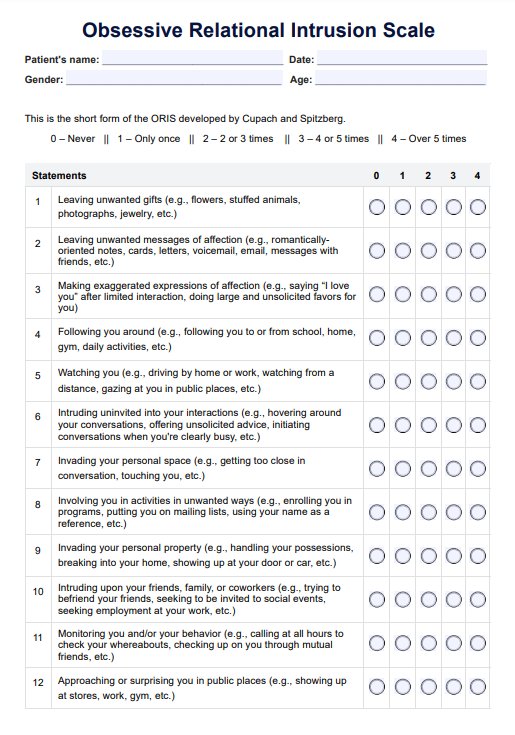Obsessive relational intrusion (ORI) refers to repeated and unwanted pursuit behaviors, such as excessive monitoring or boundary violations, aimed at gaining intimacy with another person.

Obsessive Relational Intrusion Scale
Use the Obsessive Relational Intrusion Scale to assess unwanted pursuit behaviors, and learn how it helps identify ORI patterns in research and clinical settings.
Use Template
Obsessive Relational Intrusion Scale Template
Commonly asked questions
Relational pursuit theory explains that ORI behaviors stem from an individual's persistent desire to form or maintain a relationship despite the other person's disinterest or rejection.
Unwanted pursuit behaviors include stalking, excessive messaging, and following someone without their consent, often associated with obsessive attempts to maintain proximity or control.
EHR and practice management software
Get started for free
*No credit card required
Free
$0/usd
Unlimited clients
Telehealth
1GB of storage
Client portal text
Automated billing and online payments











